Audley End, a magnificent historical estate, stands as a testament to the grandeur of the past and the ingenuity of the human spirit. Its rich history, architectural splendor, and captivating gardens have made it an enduring symbol of English heritage.
From its humble beginnings as a medieval priory to its transformation into a lavish Jacobean palace, Audley End has witnessed the ebb and flow of time. Its grand facade, opulent interiors, and sprawling gardens are a testament to the architectural brilliance of its creators.
Historical Significance
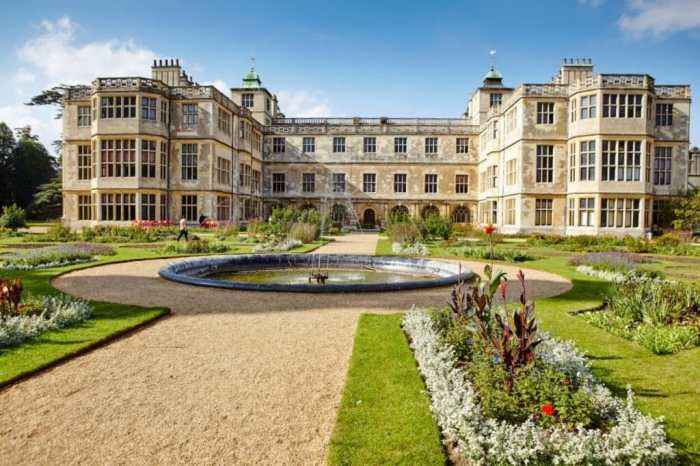
Audley End House is a magnificent Jacobean mansion located in the county of Essex, England. It has a rich and fascinating history, closely intertwined with the Howard family, one of the most prominent aristocratic families in British history.
The construction of Audley End began in 1603 under the patronage of Thomas Howard, 1st Earl of Suffolk. Howard, a close advisor to King James I, intended Audley End to be a grand testament to his wealth and power. The house was designed by the renowned architect Robert Adam and took over 20 years to complete.
Connection to the Howard Family
The Howard family has been associated with Audley End since its inception. Thomas Howard, the 1st Earl of Suffolk, was the first of many Howard family members to own and reside in the house. Over the centuries, Audley End has passed through the hands of several generations of the Howard family, each leaving their own mark on the estate.
In the 17th century, the 6th Earl of Suffolk commissioned extensive renovations to Audley End, transforming it into one of the most opulent and fashionable residences in England. The house became a center of social and political gatherings, hosting lavish parties and entertaining royalty.
Role in Major Historical Events
Audley End has played a significant role in several major historical events. During the English Civil War, the house was occupied by Parliamentarian forces and served as a base for military operations. In the 18th century, Audley End was a popular destination for the Grand Tour, attracting wealthy and influential visitors from across Europe.
In the 19th century, the Howard family fell into financial difficulties and was forced to sell Audley End. The house was acquired by the British government and became a national monument. Today, Audley End is open to the public and is one of the most popular tourist attractions in Essex.
Architectural Evolution
Over the centuries, Audley End has undergone several architectural changes and renovations. The original Jacobean mansion was expanded and embellished in the 17th and 18th centuries, adding Baroque and Palladian elements to its design.
In the 19th century, the house was remodeled in the Gothic Revival style, with the addition of towers and crenellations. The result is a stunning architectural masterpiece that combines elements from different periods and styles.
Architectural Features

Audley End House stands as a testament to the grandeur and opulence of the Jacobean era. Its imposing facade, adorned with intricate carvings and towering turrets, captivates the eye. Inside, the house unfolds into a series of lavishly appointed rooms, each boasting its own unique character. From the grand staircase to the magnificent Long Gallery, every corner of Audley End House exudes an air of elegance and sophistication.
The Grand Facade
The facade of Audley End House is a masterpiece of architectural design. Its symmetrical form, with two projecting wings flanking a central block, creates a sense of balance and harmony. The exterior is adorned with intricate carvings, including the royal arms of King James I and Queen Anne of Denmark. The large windows, set within arched recesses, flood the interior with natural light.
Opulent Interiors
The interiors of Audley End House are just as impressive as its exterior. The grand staircase, with its sweeping curves and ornate balustrade, leads to a series of magnificent rooms. The Long Gallery, stretching over 150 feet in length, is lined with portraits of the Howard family and their illustrious guests. The state apartments, including the King’s Chamber and the Queen’s Chamber, are adorned with tapestries, paintings, and furniture of exceptional quality.
Extensive Gardens
The gardens of Audley End House are a testament to the horticultural prowess of the Jacobean era. Laid out in a formal style, the gardens feature manicured lawns, elaborate flower beds, and towering hedges. The gardens are divided into several sections, each with its own unique character. The Privy Garden, located directly behind the house, is a secluded oasis, while the Wilderness, located at the far end of the gardens, is a labyrinth of paths and hidden nooks.
Gardens and Landscape: Audley End
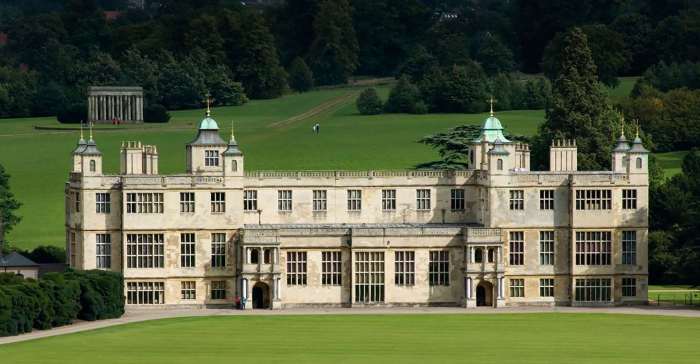
Audley End House boasts magnificent gardens and landscaped grounds that have evolved over centuries, reflecting the changing tastes and horticultural advancements of its time. The gardens showcase an array of design principles, plant varieties, and historical significance, contributing to the estate’s grandeur and charm.
Formal Gardens
The formal gardens surrounding the house are a testament to the Baroque era’s love of symmetry and grandeur. Laid out in a geometric pattern, these gardens feature manicured lawns, elaborate flower beds, and ornamental fountains. The borders are adorned with colorful annuals and perennials, creating a vibrant tapestry of colors and textures.
Woodland Gardens
Beyond the formal gardens, visitors can explore the more naturalistic woodland gardens. These tranquil spaces are characterized by towering trees, winding paths, and secluded glades. The woodland gardens provide a haven for wildlife and offer a serene escape from the hustle and bustle of everyday life.
Audley End is a magnificent Jacobean mansion steeped in history and surrounded by stunning gardens. It’s a popular destination for day trips from London and is also close to the charming town of Annecy. Annecy is a picturesque town in the French Alps, known for its beautiful lake, medieval architecture, and vibrant atmosphere.
If you’re planning a visit to Audley End, consider extending your trip to include a visit to Annecy for a truly unforgettable experience.
Lakes and Water Features
Audley End’s gardens are further enhanced by a series of lakes and water features. The Serpentine Lake, created in the 18th century, meanders through the grounds, reflecting the surrounding landscape in its glassy waters. Other water features, such as the Cascade Pond and the Grotto, add a touch of drama and tranquility to the gardens.
Current Use and Activities
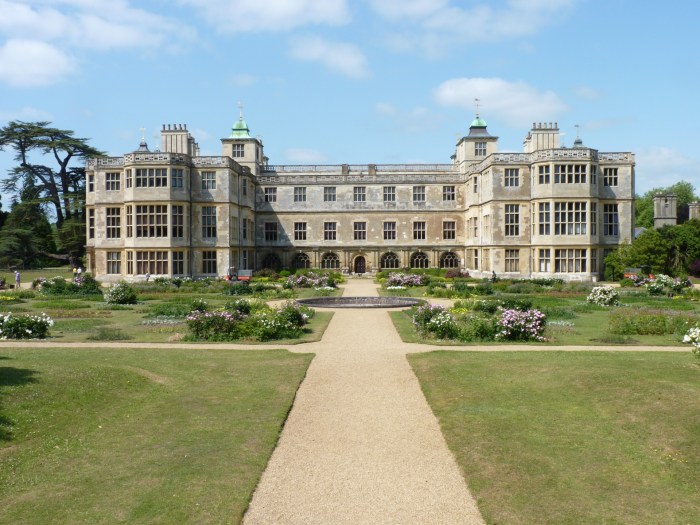
Today, Audley End House is a vibrant museum and event venue that attracts visitors from around the world. The property is owned and managed by English Heritage, a charity dedicated to preserving and promoting England’s historic environment.
Audley End, a magnificent Jacobean mansion in Essex, England, boasts an intriguing history. Its connection to global timekeeping is evident through its association with Abu Dhabi time , a time zone widely used in the Middle East. The mansion’s former owner, Thomas Howard, 2nd Earl of Suffolk, played a pivotal role in the development of timekeeping standards, contributing to the establishment of a precise and unified time system for England.
Audley End’s legacy thus extends beyond its architectural grandeur, reflecting its involvement in the fascinating evolution of global timekeeping.
As a museum, Audley End House offers a fascinating glimpse into the lives of the powerful Howard family and the history of the property. Visitors can explore the grand state rooms, admire the extensive art collection, and learn about the house’s role in British history.
Exhibitions and Guided Tours
The museum hosts a variety of exhibitions throughout the year, showcasing different aspects of Audley End’s history and collections. Guided tours are also available, providing visitors with an in-depth look at the house and its many stories.
Special Events, Audley end
In addition to its museum offerings, Audley End House is a popular venue for special events, including weddings, corporate functions, and private parties. The stunning grounds and historic setting provide a unique and unforgettable backdrop for any occasion.
Audley End’s grandeur is unmatched, its opulent rooms and sprawling gardens a testament to a bygone era. Yet, amidst its splendor, the mind wanders to the cascading beauty of Anna Ruby Falls. Its crystal-clear waters tumble over towering cliffs, creating a symphony of sound that echoes through the verdant forest.
As the sun sets, casting a golden glow on Audley End, the memory of Anna Ruby Falls lingers, a reminder of the natural wonders that exist beyond these stately walls.
Cultural Impact and Legacy
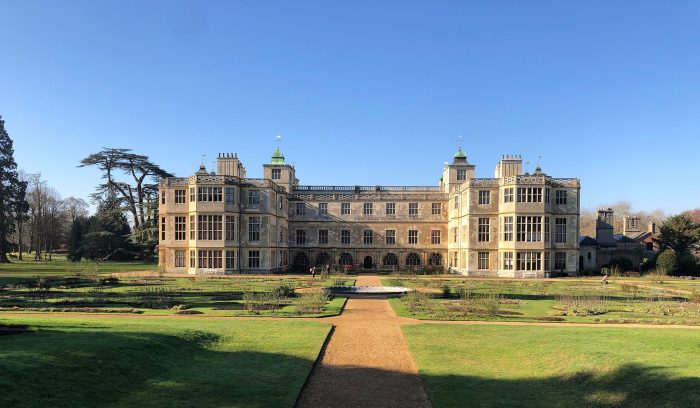
Audley End House holds immense cultural significance as a national treasure and heritage site. Its architectural grandeur, historical importance, and association with notable figures have left an enduring mark on British culture.
In literature, Audley End has served as the setting for numerous works, including Henry James’s “The Portrait of a Lady” and P.D. James’s “Death in Holy Orders.” Its opulent interiors and picturesque grounds have provided inspiration for countless artists, including J.M.W. Turner and John Constable.
Role in Popular Culture
- Audley End has featured prominently in popular culture, appearing in films such as “The King’s Speech” and “The Favourite.”
- The house and its gardens have also been used as a filming location for television shows, including “Downton Abbey” and “The Crown.”
- The cultural legacy of Audley End extends beyond its physical presence, as it has become a symbol of British heritage and grandeur, inspiring awe and admiration in visitors from around the world.
Restoration and Preservation

Audley End House has undergone extensive restoration and preservation efforts over the centuries to maintain its historical integrity and architectural significance. The challenges of preserving a building of such scale and age are numerous, but skilled craftsmen and historians have employed various techniques to ensure its continued existence.
Restoration Techniques
The restoration of Audley End House has involved a range of techniques, including:
- Stonework Repair: Deteriorated stonework has been repaired or replaced using traditional methods, such as lime mortar and hand-carved stone.
- Roofing Maintenance: The complex roof structure has been meticulously maintained, with repairs and replacements carried out using original materials and techniques.
- Interior Decoration: Many of the original interior features, such as plasterwork, panelling, and fireplaces, have been restored or recreated based on historical records.
Challenges
Preserving Audley End House presents several challenges, including:
- Funding: The ongoing restoration and maintenance of a property of this size and significance requires substantial funding, which is often a challenge to secure.
- Authenticity: Balancing the need for restoration with preserving the historical integrity of the building can be a delicate task, requiring careful research and consultation with experts.
- Environmental Factors: The passage of time and environmental factors, such as pollution and climate change, can pose threats to the building’s fabric and interior.
Tourism and Visitor Experience
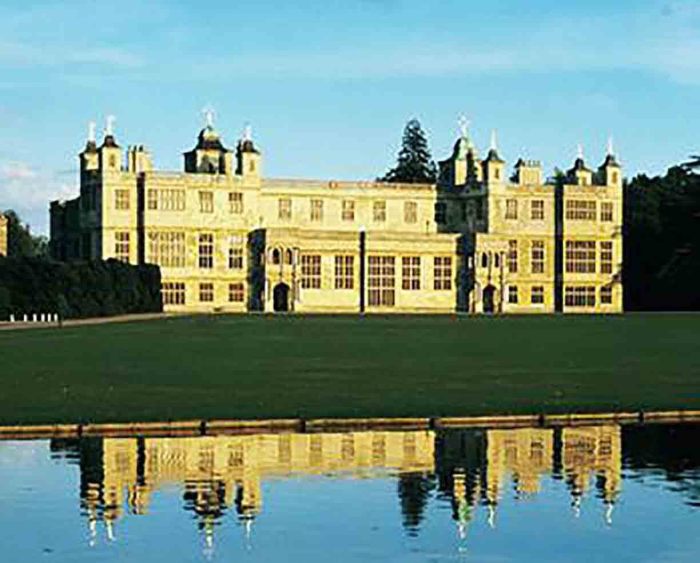
Audley End House welcomes visitors with an array of amenities and educational resources to enhance their experience. The property offers wheelchair accessibility, allowing all guests to fully explore the historic site. Guided tours led by knowledgeable staff provide insights into the rich history of the house and its inhabitants. Interactive displays and multimedia presentations engage visitors of all ages, offering a captivating and immersive journey through time.
Economic and Cultural Benefits
Tourism associated with Audley End House has significant economic and cultural benefits for the region. The influx of visitors supports local businesses, such as restaurants, cafes, and shops, creating employment opportunities and boosting the local economy. Additionally, the property serves as a cultural hub, hosting exhibitions, events, and educational programs that enrich the community’s understanding of history and heritage.
Last Recap
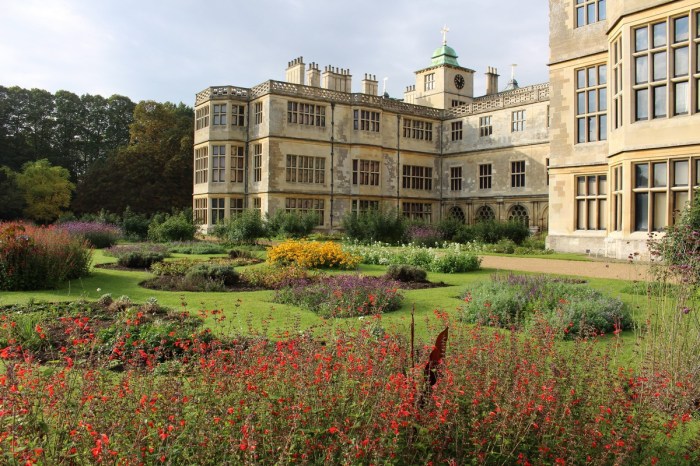
Today, Audley End continues to enchant visitors as a museum and event venue, offering a glimpse into its illustrious past and providing a stunning backdrop for contemporary gatherings. Its cultural significance and enduring legacy ensure that it will remain a cherished national treasure for generations to come.
Top FAQs
What is the history of Audley End?
Audley End’s history dates back to the 12th century when it was founded as a Benedictine priory. In the 16th century, it was acquired by Henry VIII and later became the residence of the Howard family, who transformed it into a magnificent Jacobean palace.
What are the architectural highlights of Audley End?
Audley End is renowned for its grand facade, which features a central portico supported by Corinthian columns. The interior boasts opulent rooms adorned with intricate plasterwork, tapestries, and paintings. The estate also includes extensive gardens and a landscaped park.
What is the current use of Audley End?
Today, Audley End is a museum and event venue. It houses a collection of furniture, paintings, and other artifacts that showcase its history. The estate also hosts exhibitions, guided tours, and special events.